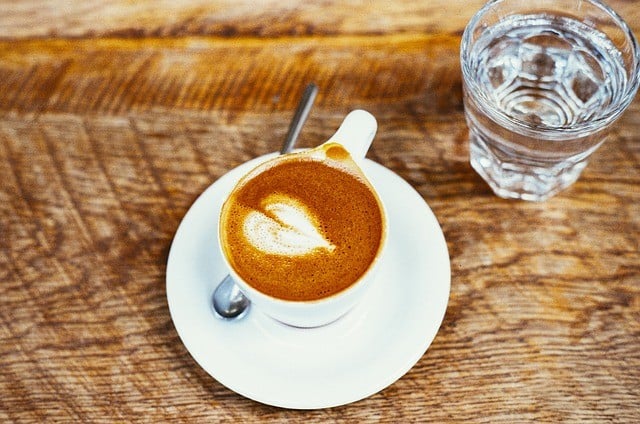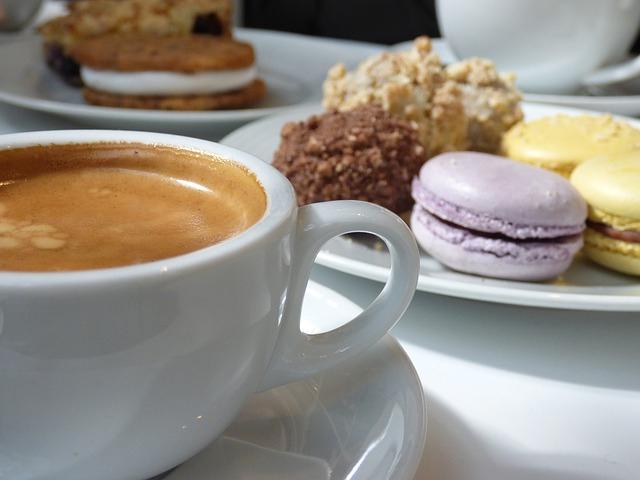We’ve all seen the memes about morning time and coffee, but do you really want more coffee or do you just want more energy? Believe it or not, caffeine is not a synonym for energy. There are plenty of ways to get energized with less, or no caffeine. Caffeine should be used strategically – there’s nothing strategic about drinking an entire pot of coffee every morning. I’ve been there. As a recovering caffeine addict, I know what it’s like to want more and more energy when the caffeine seems to work less and less. Enough is enough.
Here are 10 ways to get more energy with less caffeine:
1. Get Moving
If you’re tired, more sleep may not be the answer. Exercise may be the answer. New research shows that exercise can help fight fatigue. Patrick O’ Connor, co-director of the University of Georgia Exercise Psychology Laboratory, says:
“A lot of times when people are fatigued, the last thing they want to do is exercise, but if you’re physically inactive and fatigued, being just a bit more active will help.”
Even just adding a minute workout to your morning routine can substantially boost your energy levels. If you want to incorporate a little caffeine, take a small amount just before your workout. The exercise will help to ‘activate’ the caffeine and give you even more energy.
2. Lower Your Tolerance
The less caffeine you consume, the more effective it is for you. Odds are, you’ve built up quite a tolerance to caffeine over the years. Try cutting back your caffeine intake to zero and then wait a few weeks before you ingest it again. You’ll be surprised at how much more effective the smallest amount of caffeine is once your tolerance for it has evened out.
Just be sure to add it back to your life slowly or you’ll end up where you started. One study showed that caffeine tolerance can come back to the same level as it was before a caffeine hiatus in just 1-4 days if you jump right back into using the same amount as before.
3. Change Your Mode
Does your caffeine come in the form of coffee, espresso, energy drinks or something else? You may be going for whatever has the most caffeine and that could be why you have an energy problem. Green tea, for example, has about 1/4 the caffeine of a cup of coffee. After the above-mentioned caffeine hiatus, you’ll be surprised at how well a little green tea works for energy. Find some new ways to caffeinate – there are literally thousands of options.
4. Go Green
Green smoothies, green powders and green teas are just a few of the greens you need in your life. Eating and/or drinking more leafy greens in food and smoothies will seriously boost your energy levels. Many people find that green smoothies work better than a cup of coffee and you don’t have to worry about building up a tolerance. Some people actually question the benefits of green smoothies, but once you try them, you’ll understand how effective they are. There’s some controversy over green smoothies, but it really comes down to sugar content. The key ingredient in a greens smoothie should be the greens, not sugary fruit and fruit juices.
5. Sleep More Sleep Better
You may be getting enough sleep, but are you getting good sleep? The quality of your sleep is just as important as the amount, and you may find that you can function well on less hours if quality is better. Here are a few tips to improve your sleep:
- Avoid caffeine, alcohol and heavy meals before bed
- Invest in a high-quality mattress and a nice pillow
- Adjust the temperature to your liking (usually 65-70° F)
- Avoid ‘blue light’ from electronic devices before bed
- Exercise – more exercise will lead to better sleep
You should also try to sleep within the confines of sleep cycles. Sleep cycles are 90 minutes, so sleeping for 6, 7.5, or 9 hours is generally more effective than sleeping for 5, 8, or 10 hours. One way to take the guesswork out of sleep cycles is to get the Sleep Cycle Alarm Clock for your smartphone.
6. Drink Water First
There’s nothing wrong with a cup of coffee in the morning, but drink water first. If you drink an entire liter of water, you may not even need the coffee. Our bodies are dehydrated after we go all night without any fluids. This isn’t just for morning time; drinking water throughout the day will help you to stay hydrated, which leads to increased and sustained energy levels. Contrary to popular belief, a reasonable amount of caffeine doesn’t really dehydrate you and the water that makes up the majority of your coffee can count towards your daily water intake, but it only accounts for a small fraction, so keep chugging that water.
7. Cut the Sugar
When you do use caffeine, go for things like black coffee and non-sweetened tea. Sugary energy drinks and coffee drinks are great for a quick boost- but then comes the crash. The crash usually isn’t from the caffeine (though caffeine can cause a crash), it’s usually from the sugar. If you’re going to have caffeine, have it alone, without all the sugar. Some people have found that energy shots work better for them, since the amount of sugar or sugar substitute is minimal- but everyone’s body reacts differently.
8. Spread it Out
Don’t think ‘chug’, think ‘sip’. Sipping caffeine over a longer period of time can cause higher and more sustained energy levels. Often, the caffeine passes through your system before your body has a chance to react to it when you drink it quickly. Sipping also helps your body to slowly clear the caffeine out of your system, which means a crash is much less likely to occur.
9. Use Food for Fuel
Keep your diet clean and full of fruits and veggies. This will help to sustain your energy levels throughout the day, without even touching caffeine. I love food and I’m sure you do too, but every meal doesn’t have to be a celebration. When you want a nice dinner, take the time to focus on it, but for every other meal, you’re just putting fuel into your body. Separate your leisure meals and your energy meals. For example, you may want a leisurely dinner every night with your family, but for breakfast and lunch, you’re just filling up the tank, so eat food that will give you the energy you need. Think: vegetables, fruits, lean meat, nuts and occasional whole grains.
10. Go Natural
When you do consume caffeine, try more natural sources like Guarana. Guarana is a plant that contains naturally occurring caffeine. Coffee bean extract and green tea extract are a few more ways to naturally caffeinate. Sure, to an extent, caffeine is caffeine, but natural sources will help you eliminate the artificial sugars, preservatives and chemicals found in many drinks and pills.
Just remember, you don’t need caffeine, and if you think you do, you’re probably addicted and it’s not working very well anyways. There are plenty of ways to increase your energy without caffeine and there are even more ways to strategically use caffeine to your advantage. Don’t work for caffeine, make caffeine work for you.






















































